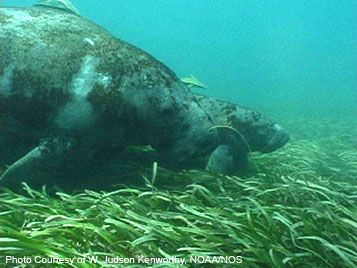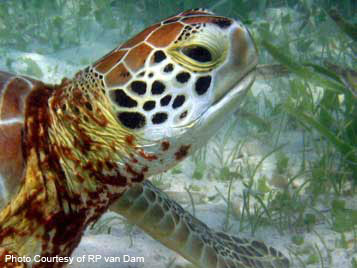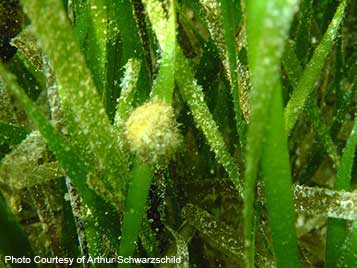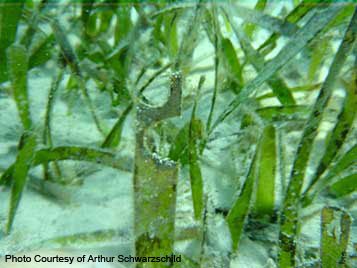Currently, seagrasses typically do not follow a direct food chain where their stored energy is passed on to an herbivore, who is eaten by a carnivore, etc. There are not many animals that directly eat seagrass. Instead, seagrasses are the base of a detrital food web. As the seagrass dies it is decomposed by bacteria. These bacteria and the decaying seagrass are then a food source to larger animals such as crabs or fish.
In the past direct grazing on seagrass was more common. There was a more direct food chain for seagrass meadows. Sea turtles, manatees, and dugongs are all large animals that feed directly on seagrasses. These animals, however, are all now rare and endangered due to hunting and loss of habitat.
Algae and small animals, together knows as epiphytes, are often attached to seagrass leaves. These epiphytes are more palatable and nutritious than the seagrass and are often directly consumed by snails, invertebrates, and small fish.



